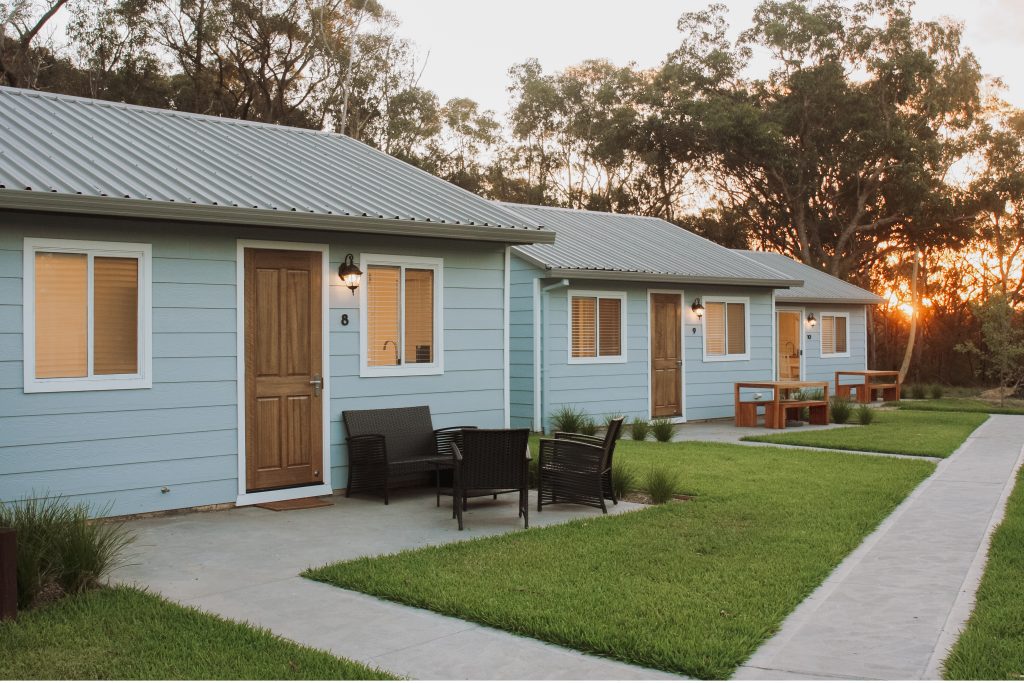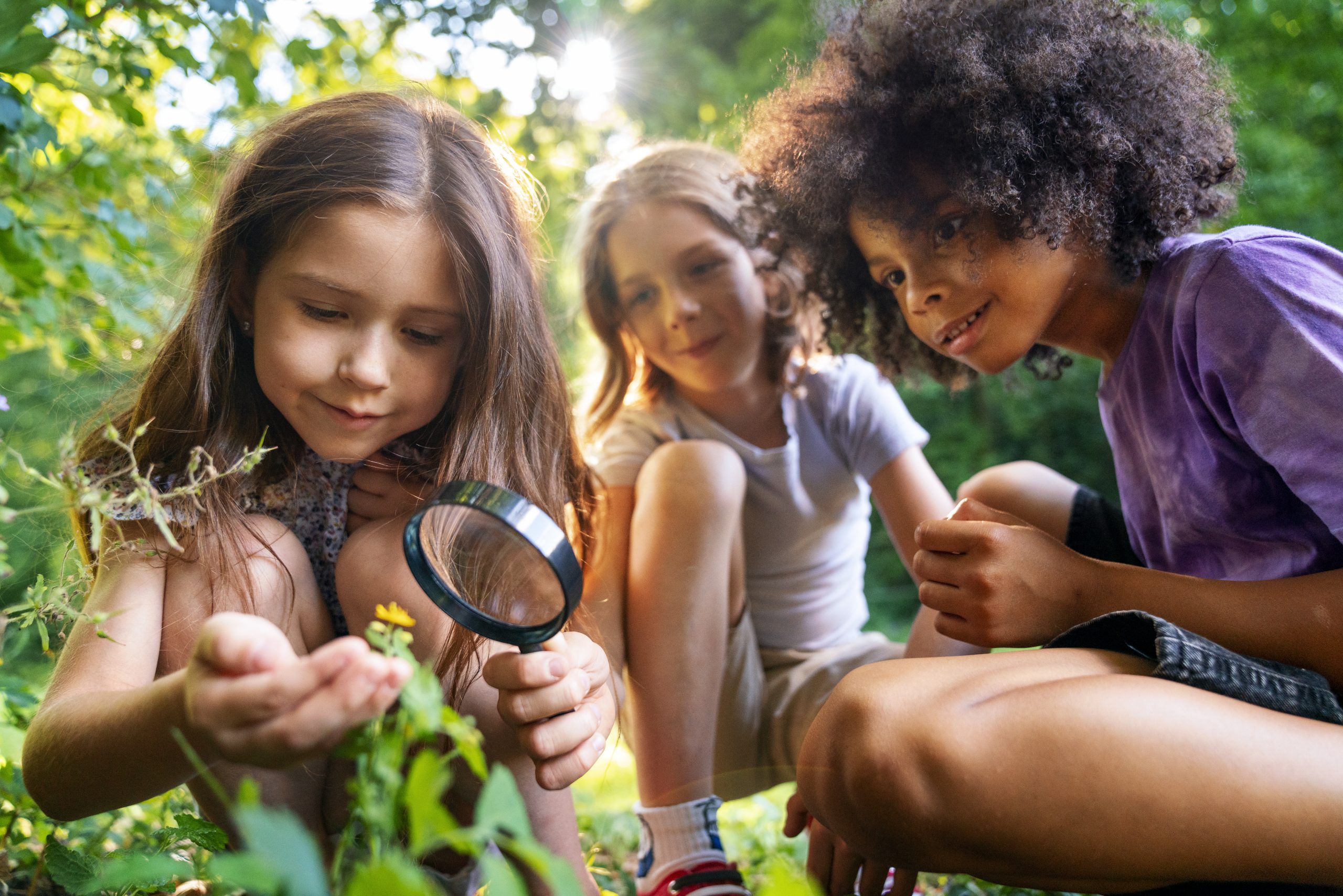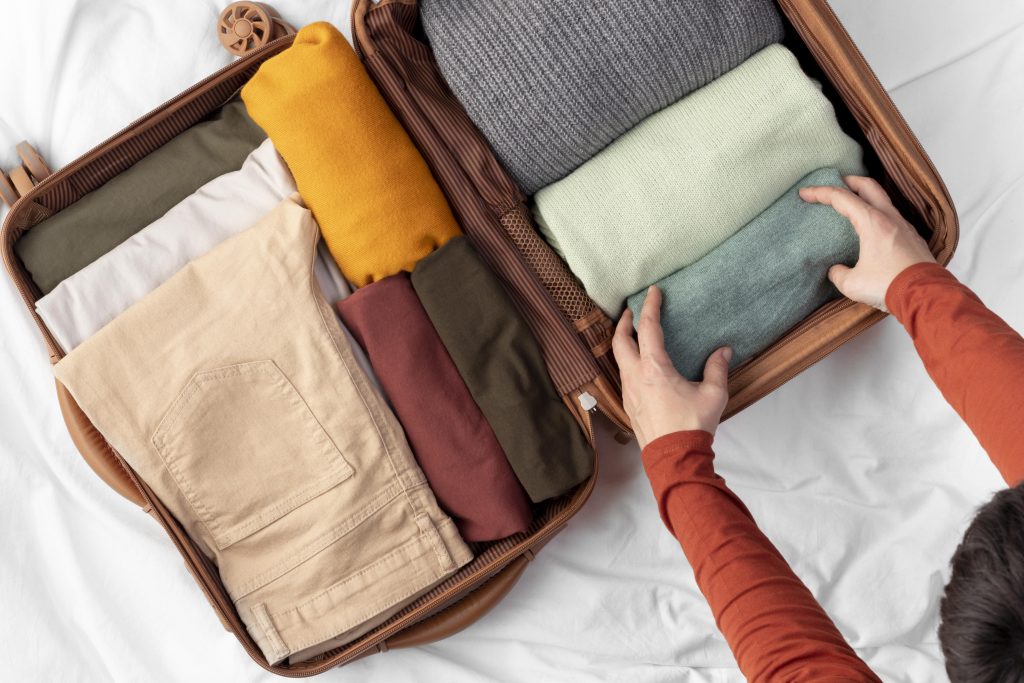
School camps are an exciting and purposeful way to enrich the education of kids and teens. These adventures provide students with hands-on learning experiences that foster teamwork, resilience and leadership skills. More than just a break from the routine, school camps offer a chance to connect with nature and leave a mark on personal growth. Let’s look at how to plan a school camp in detail. We’ll also leave a summarised checklist at the end for quick reference.
Step 1: Define the Camp Objectives
A great school camp begins with a clear purpose. The key question is: what are you hoping to achieve? Is it fostering team spirit, enriching learning or simply having an unforgettable time? Lay these objectives out, and you’ll have a foundation to build upon. Here are 3 common objectives school camps are typically based on:
Team Building
If your aim is to foster team spirit, your camp becomes a platform for students to learn the value of collaboration, trust and effective communication. Team building activities like problem-solving challenges and group games can be the core of your program.
Enriching Learning
For those looking to make their school camp an educational experience, consider what knowledge and skills you want the students to gain. Is it environmental education, history or perhaps leadership skills? Tailor your camp activities to align with these objectives. You could incorporate nature walks, koala-spotting, interactive workshops or guest speakers to enhance the learning experience. Remember, a well-balanced educational camp can be both fun and enriching.
Unforgettable Fun
If your primary goal is to create lasting memories and have an absolute blast, then your camp will be all about enjoyment. Your activities should be thrilling and engaging, and your focus is on creating positive and unforgettable moments. Think adventure activities, themed parties and exciting challenges that keep students enthusiastic from start to finish.
A Blend of Objectives
In some cases, your camp may aim to achieve a combination of objectives. You might want students to bond as a team while also acquiring new skills or knowledge. In such cases, it’s essential to strike a balance. Design your program in a way that lets you meet multiple objectives without overwhelming the students.
Why are Clearly Defined Objectives Important?
Clearly defined objectives serve as a roadmap for your entire camp planning process. They not only help you make informed decisions but also allow you to communicate the purpose and expectations of the camp to both students and staff.
Your objectives will influence the selection of your camp location, the choice of activities, the curriculum (if educational) and even the overall tone and atmosphere of the camp. For example, a team-building camp may favour cooperative activities and challenges, while an educational camp might lean towards workshops and informative sessions.
Step 2: Find a School Camp Location in NSW
Australia boasts a wealth of breathtaking camp locations, from coastal getaways to bush retreats. When it comes to selecting a location for a school camp with kids or teens, the key is to strike a balance between the breathtaking scenery, proximity and safety. Ensure that the chosen group accommodation venue is accessible for the age group, while prioritising the safety and enjoyment of young participants. Additionally, it should match the objectives you’ve set for the camp, creating an environment that both captivates and supports the educational, bonding or adventurous aspects of the experience.
Step 3: Create a Camp Budget
Creating a well-structured budget is the backbone of a successful school camp.
In your budget, it’s important to consider every detail, from accommodation and meals to transportation, activities and permits. But don’t forget to set aside a portion for those unexpected surprises that can crop up, such as medical emergencies or equipment repairs. A budget will allow you to allocate resources where they’re needed most, ensuring a memorable and well-organised camp experience for all.

Step 4: Prioritise Safety
Safety should be woven into your planning process – it’s non-negotiable.
Risk Assessment
Before you set out on your school camp journey, take the time to meticulously assess potential risks. Consider the type of activities you have planned and the environment where they will take place. For instance, if you’re organising hiking or outdoor activities, analyse the terrain for potential hazards like steep slopes, unstable ground or dangerous wildlife. In water-based activities, ensure that all participants are familiar with water safety practices. When organising campfires, adhere to Rural Fire Service (and other) safety guidelines and ensure those involved understand proper fire management. Conducting a comprehensive risk assessment not only helps prevent accidents but also equips staff to respond effectively to unexpected situations.
Emergency Plan
Your emergency plan is your safety net, ready to catch you if things go awry. It should be a well-thought-out strategy that covers a range of potential scenarios. This includes medical emergencies, inclement weather, lost campers and more. Practicing drills can be invaluable in ensuring that everyone knows what to do in the event of an emergency. Having a well-defined plan provides peace of mind, not only for you as the organiser but also for students and their families.
Medical Supplies
Make sure you have well-stocked first-aid kits that include essentials like bandages, antiseptics and over-the-counter medications for common ailments. Consider any specific medical needs that campers may have and ensure you have the necessary supplies on hand. Equally important is having staff members who are trained in basic medical care and can administer first aid when needed. Campers and staff should be aware of where medical supplies are located and how to use them, in case of minor injuries or illnesses.
Step 5: Find the Best Accommodation for Your School Camp
Group accommodations like dormitories and cabins offer unique advantages, especially for school groups.
Dormitories provide a communal atmosphere that encourages students to interact and bond. They are also cost-effective, allowing schools to accommodate more students within their budget. Cabins offer a balance between shared and private space. They provide a cosy and comfortable environment where students can retreat to after a day of activities. Cabins often have the added benefit of private bathrooms, ensuring the comfort and convenience for students and staff.
Whichever you choose, cleanliness, maintenance and suitability for your group are generally the most important.

Step 6: Organise Food and Catering for the School Camp
At a school camp, food is an integral part of the experience.
First and foremost, consider the dietary needs of your participants. The menu should be simple yet delicious and there should be options that cater to various requirements. This might mean catering to dairy, gluten or nut allergies, amongst others. Additionally, children can often be a little on the picky side, so having e.g., two simple and unique options will ensure all students are fed and happy.
If your camp involves cooking on-site, it’s important to ensure that you have the right equipment and staff with the necessary food handling certifications. If you’d like to reduce the hassle and have meals made for you, you could ask your chosen school camp venue near Sydney if they offer catering options.
Step 7: Plan Activities for the School Camp
An engaging program is the heart of your camp. Infuse it with variety – team-building, educational components and an abundance of fun activities. Let the age and interests of your students guide your choices and don’t forget to leave room for spontaneity. Primary school children will often be thrilled about an accommodation venue with a swimming pool or a playground, whereas high school students might appreciate an accommodation venue with sports facilities, such as a soccer field, volleyball nets or a table tennis table. Day trips in Sydney are also a popular activity preference among school groups, a popular day-trip location being the Australian Botanic Garden in Mount Annan.

Step 8: Recruiting Staff for a School Camp
Behind every successful camp are capable and dedicated. Ensure they’re trained, equipped and ready to handle their roles. A good staff-to-student ratio ensures supervision and safety are never compromised. For younger students, especially those in primary school, a lower ratio may be necessary, such as 1 staff member for every 5-10 students, while for senior high school students, 1 staff member for every 15-20 kids is generally adequate. It’s important to also note that in New South Wales, all staff members involved in working with children are required to possess a valid Working With Children Check. As the organiser, it’s your responsibility to verify that each staff member holds this check.
Step 9: Foster Good Communication
Communication is key. Keep parents and students in the loop. Share a detailed itinerary, packing list and emergency contact information. Foster open lines of communication with parents and guardians, so everyone is on the same page.
Step 10: Reflect and Improve
After the camp, take the time to reflect. Gather feedback from both students and staff. What worked? What didn’t? Did the students enjoy the school camp overall? Did any unexpected circumstances come up that you weren’t prepared to handle? This invaluable insight will help you improve your future camps and ensure you continue to meet your objectives.
Ideas for a Fun School Camp
School camps are the highlight of the year for most kids, so how can we make a school camp more exciting? There are many ways to make a school camp more fun, including:
- Incorporate a theme. A theme can add an extra layer of excitement and engagement. Whether it’s a pirate adventure, a space mission or a historical journey, a theme can immerse students in a world of imagination, making the experience all the more thrilling.
- Encourage student leadership. Giving students roles and responsibilities not only creates a sense of ownership but also provides valuable opportunities for leadership and personal growth. For example, letting kids assist in preparing the campfire, cooking or planning activities.
- Campfire nights are classics for a reason. Campfire nights are an enduring tradition for a good reason. They bring people together through storytelling, song and the simple joy of toasting marshmallows over an open fire.
- Spice things up with a talent show or group projects. A talent show or collaborative group projects add a touch of creativity and teamwork to the camp experience. It encourages campers to showcase their talents and work together, building new skills and camaraderie.
- Capture fun moments creatively. A designated camp photographer or a photo booth can ensure that those special camp moments are captured professionally, providing lasting memories for students and staff alike. Contact your chosen school camp venue and check whether they have an onsite photographer or videographer available to document your trip. The parents would love to see what their kids got up to!
What to Pack for a School Camp
As an organiser you’ll likely be sending out a packing list to your students. The exact items a child or teen should bring on their camp will differ, depending on the weather and personal preferences. Here’s a rough guide for what to bring on a school camp, in both summer and winter:
Summer Packing List
1. Clothing
- Lightweight and breathable clothes: Pack shorts, t-shirts, tank tops and dresses for the hot weather
- Activewear
- Swimmers: Consider a rashie to reduce the risk of getting burnt
- Sun hat
- Sunglasses
- Comfortable sandals
- Comfortable walking shoes
- Extra socks and underwear
- Rain gear: A lightweight, waterproof jacket in case of unexpected rain
- Pyjamas
2. Personal Items
- Toiletries: Toothbrush, toothpaste, soap, shampoo and other personal hygiene products
- Towels: Opt for a quick-dry, compact towel for both swimming and showering
- Sunscreen: 50+
- Mozzie spray
- Personal medications if applicable, e.g., asthma puffer
3. Bedding
- Sleeping bag: Make sure it’s suitable for warm weather, i.e. not too thick
- Pillow
- Sheet
4. Miscellaneous
- Backpack
- Pool toys, if permitted
- Sports equipment, if applicable
- Reusable water bottle
- Torch or headlamp
- Notepad and pen
- Snacks
- Plastic bags: Keep wet or dirty clothes separate
5. Entertainment
- Books or a Kindle
- Playing cards or games
- Toys, for younger children
6. Optional Items
- Camera
- Musical instrument: If you play one and it’s allowed, it can add to the fun around the campfire.

Winter Packing List
What you need to bring to a school camp in winter really depends on how freezing it is. Here’s what you’d need for peak winter time in New South Wales:
1. Clothing
- Warm layers: Pack thermal tops and bottoms, hoodies and long-sleeved shirts
- Winter jacket: A good quality, insulated jacket
- Waterproof coat: Ensure your outer layer is waterproof to stay dry in wet conditions
- Beanie and gloves
- Scarf
- Comfortable boots: Insulated boots with good traction are ideal for outdoor activities
- Woolen socks
- Warm pyjamas
2. Personal Items
- Toiletries: Toothbrush, toothpaste, soap, shampoo and other personal hygiene products.
- Towel
- Sunscreen
- Mozzie spray
- Personal medications if applicable
3. Bedding
- Warm sleeping bag: Choose a sleeping bag rated for low temperatures
- Extra blankets
4. Miscellaneous
- Backpack
- Reusable water bottle
- Hat and sunglasses
- Torch or headlamp
- Notepad and pen
- Snacks
- Plastic bags: Keep wet or dirty clothes separate
5. Entertainment
- Books or a Kindle
- Playing cards or games
- Toys, for younger children
6. Optional Items
- Camera
- Musical instrument: If you play one and it’s allowed, it can add to the fun around the campfire
Accommodation for School Camps
Long Point Conference Centre is a group accommodation venue in Sydney that caters to groups of 40-150+ people. Only a 45-minute drive from Sydney city, LPCC is a popular option for groups looking for school camp venues in NSW. Our venue boasts various facilities including an auditorium, swimming pool and sauna, soccer field, volleyball nets, a children’s playground and newly-renovated accommodations.
In addition to school camps, we also cater to many other types of events, including wellness retreats, family reunions, Christian youth camps and yoga retreats.
Ready to enquire about availability or make a booking? Contact us here. We looking forward to hearing from you and providing your school group with a memorable stay!
Checklist for Planning a School Camp
- Define camp objectives
- Find the best school camp location
- Create a camp budget
- Prioritise safety
- Find suitable group accommodation
- Organise food and catering
- Plan activities
- Recruit staff
- Foster good communication
- Reflect and improve for future school camps.
